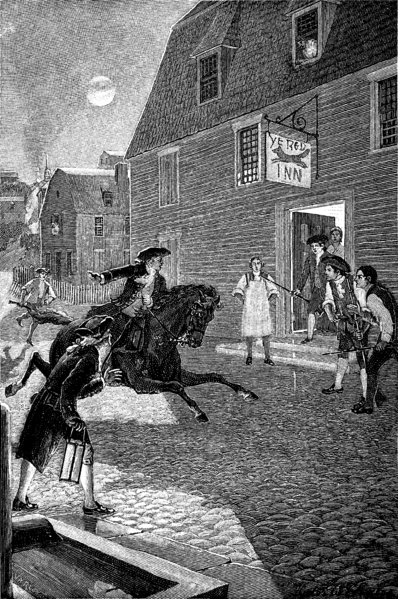The History of One of Boston’s Most Beloved Historic House Museums

The United States boasts lots of historic house museums with at least a few in nearly every state, and one of the first-established historic house museums is right here in Boston: the Paul Revere House, opened to the public in 1908. From its construction around 1680 (341 years ago!) to today, the Paul Revere House boasts an extensive and fascinating history, and is one of many Boston museums that is always worth a visit!
Situated at 19 North Square in Boston’s North End neighborhood, the building known today as the Paul Revere House is believed to have been built around 1680. Though it may not seem like it from our present-day perspective, the house was essentially a mansion by seventeenth-century standards: with two high-ceilinged stories, a small attic, and a basement kitchen, the house had much more space than many others at the time. The first inhabitants of the house were, in fact, one of the wealthiest families in Boston at the time—merchant Robert Howard, his wife and daughter, and one enslaved man.

Paul Revere, the house’s fourth owner and its most famous resident by far, occupied the property from 1770 (when he was thirty-five, and the house was already ninety years old) until 1800. For those three decades the house was home to Paul, his first wife Sarah Orne Revere, his second wife Rachel Walker Revere, his sixteen children (although it’s believed that only five to nine children lived in the house at any given time), and occasionally extended family members and boarders as well. It was also where Revere began his famous Midnight Ride on the night of April 18th, 1775: he made his way from the house to the Charles River, which he rowed across in a canoe, then got on a horse and rode several miles north to Lexington and Concord to warn Samuel Adams and John Hancock of the British troops’ approach. After being captured by the British and held for a few hours, Revere began to make his way home on foot, witnessing the Battles of Lexington and Concord in the process.
For a century or so after Revere moved out of the house in 1800, the building served a variety of purposes. The ground floor was transformed into a commercial space: a bank, a grocery, a candy store, and even a cigar factory all operated there in turn. The upper floors, meanwhile, served as a boarding house, most often for the Italian, Irish, and Jewish immigrant families who were increasingly settling in the North End at that time.
In the first years of the twentieth century, there was a small fire in the basement of the house—fortunately it wasn’t significant enough to cause any damage to the house, but it did make the newspapers at the time. This increased scrutiny on the house led to it being purchased by a Revere descendant, John P. Reynolds, Jr., in 1902. After several years of fundraising and restoration, the Paul Revere House opened as a museum in 1908. Today, visitors can tour four rooms in the house: the kitchen, the hall (which is the only room in the house to model a pre-Revere period, inspired instead by the Howard family’s residence in the late seventeenth century), and two upstairs bedrooms. Also on the museum’s property are the Pierce–Hichborn House, a brick house that dates to 1711 and was occupied for many years by Revere’s cousin Nathaniel Hichborn, and Lathrop Place, a nineteenth-century building that was originally constructed as tenement housing and has served since 2016 as the museum’s visitor center.
Historic house museums have proven enduringly popular, and given its status as one of the nation’s first historic houses and the oldest continually standing building in downtown Boston, the Paul Revere House is no exception! The museum is open to visitors every day from 10am to 4:15pm (and don’t forget that if you’re a NEMA member, you can get in for free!).